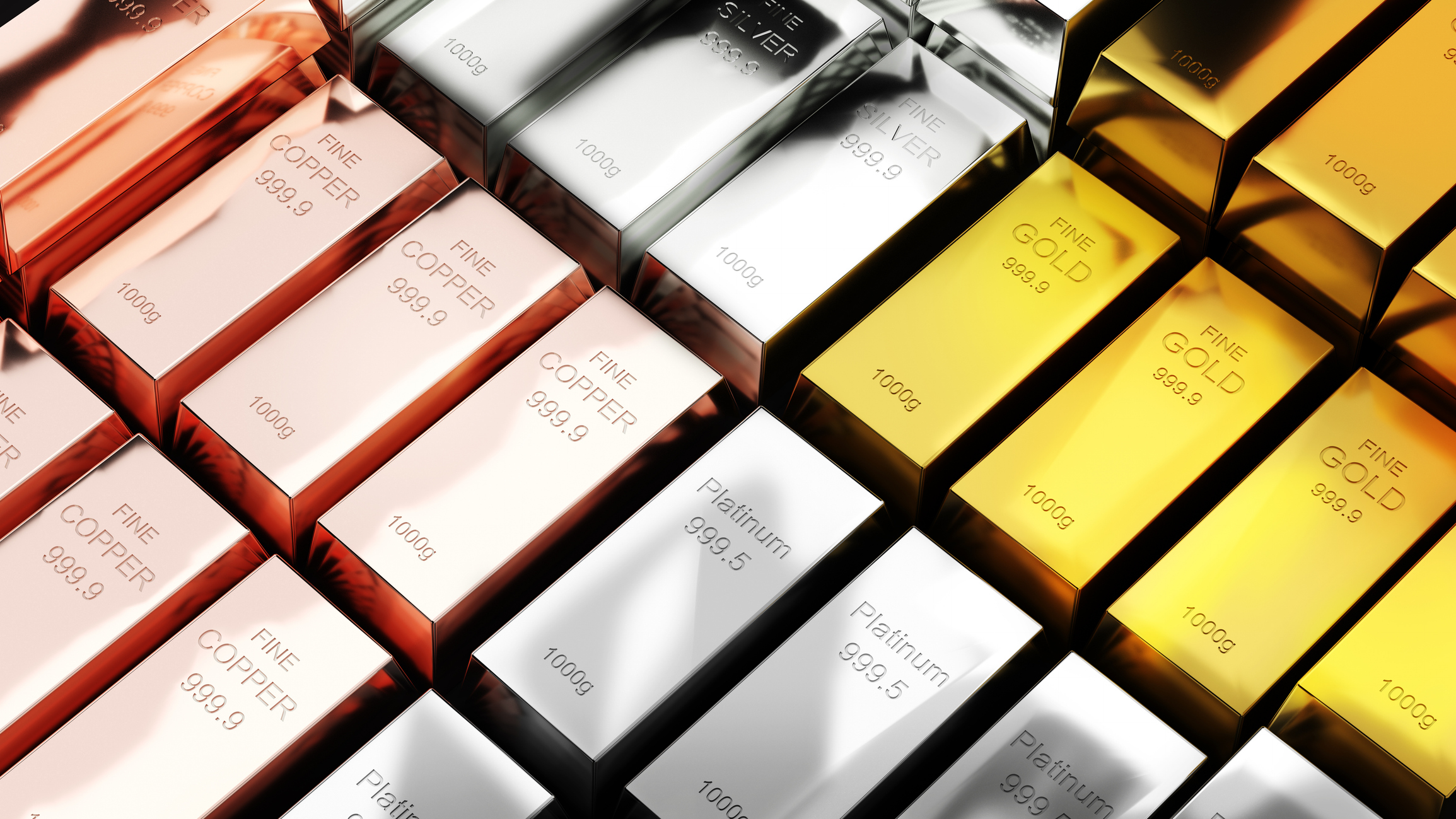How to invest in the metal industry boom
Latin America offers investors an opportunity to fuel the energy transition and play the base metals. James McKeigue lists his top picks.


It has been an exciting year for investors in base metals. In May, copper hit record highs, while nickel, zinc and tin prices have all seen double-digit gains this year. One thing all these base metals have in common is that we need them for the energy transition. Another is that they have all recently suffered from serious supply disruption. Lithium, meanwhile, also crucial to the energy transition, has seen its price plummet as supply has ramped up. Latin America is the key global store of most of the energy transition metals. As countries and investors compete to secure supplies of critical minerals, the region’s mining sector will see an inflow of capital.
Uptick in prices of base metals
One of the reasons for the recent uptick in base-metals prices that is less understood is the influx of energy traders and funds. Energy trading houses (such as Gunvor, Vitol and Mercuria) that made huge profits buying and selling oil have moved, or moved back, into metals. At present, the value of the metals market is far smaller than that of oil and gas, but as one of the traders told me: “We are diversifying today [for] what might happen tomorrow. If the energy transition takes off, we want to be there”.
Some investment firms, meanwhile, aren’t content with simply getting exposure to metals prices via stocks, bonds or derivatives. They want to enter the physical market too. As one explained to me, “having access to physical flows of metal gives us forward-looking data about demand that we use to guide our financial positions”. These funds’ financial bets on metals prices are often much larger than their physical holdings.
MoneyWeek
Subscribe to MoneyWeek today and get your first six magazine issues absolutely FREE

Sign up to Money Morning
Don't miss the latest investment and personal finances news, market analysis, plus money-saving tips with our free twice-daily newsletter
Don't miss the latest investment and personal finances news, market analysis, plus money-saving tips with our free twice-daily newsletter
Even miners are caught up in the excitement. In April, Australia-headquartered BHP made an unsolicited bid for London-listed Anglo American. Copper was at the heart of the $38.8 billion deal. If it had gone through, the deal would have created the world’s largest copper miner, with 10% of global output. The bid failed in May, but now Anglo American is under pressure to divest some of its non-copper assets.
The reason for the upsurge in prices is the energy transition. We need to switch from fossil fuels to renewable energy, which means new power generation, transmission lines and electric vehicles – all of which require the metals listed above.
Another chapter in the demand story for these metals is our growing dependence on technology. We now put computer chips in everything from bicycles to washing machines and expect our devices to be connected to the internet or each other. This “internet of things” increases the need for energy hungry data centres, as does the growth of artificial intelligence (AI). More data centres mean increased electricity generation and storage, boosting demand for copper, tin, nickel and zinc.
But the story is years old, so why are the investors piling in now? It’s becoming more apparent we won’t actually be able to build the mines needed to produce enough of these metals. And in a tightly supplied market, it doesn’t take much to make prices swing. Those dramatic price movements entice more investors and traders into the market because they make money in volatile environments – which further propels prices.
Challenges facing the metal industry
In May, a host of base-metal prices hit highs on the London Metal Exchange (LME). The three-month futures contract for copper hit $11,104.50 per tonne on 20 May – a new all-time high. Nickel hit an eight-month peak on that day, with the three-month contract reaching $21,615 per tonne. Tin hit $36,050 per tonne last month, up by 47% since the start of 2024. The three-month zinc price closed at $3,062.50 on 22 May, a 24% gain in a month before and a 25-month high.
All of these metals have different markets, uses and dynamics, but they share some traits. Demand for all of them is expanding due to the energy transition and they have all suffered from disruptions to supply.
In copper the most dramatic hit to production came when the Panamanian government ordered the closure of Cobre Panama in late 2023. The mine, owned by Canada-listed First Quantum Minerals, comprised 1% of the annual global copper supply, so its closure had a big impact. But more significant than this type of “black-swan” event are the structural factors that make it more difficult to produce copper. During 2023 and 2024, several large copper miners revised their annual production forecasts downwards.
Growing environmental and community activism has made it harder to build new mines. The average time to take a copper discovery into a producing mine has gone from seven years to almost 20, so miners focus on extending existing mines. But these “brownfield” projects invariably have lower ore grades or other technical challenges. The difficulty of producing more copper by the drill bit explains why BHP tried to do it via the chequebook.
In the UK tin is associated with food cans or abandoned mines in Cornwall. Yet nowadays more than 50% of demand for tin is for soldering electrical components and computer processors. It is a key metal for the energy transition. It is part of the “solar ribbon” that connects the individual cells in a solar panel, while electric vehicles (EVs) use three times more tin than conventional cars. The “soldering metal” is also in the new computer chips that enable AI. So tin is a future-facing metal essential for both the energy transition and the fast-growing technology sector, yet it just takes a quick glance at the world’s main tin-producing countries to see why supply might be precarious.
Uncertain future ahead for nickel
Peru, the world’s second-largest tin producer, is subject to frequent bouts of civil unrest and political turmoil, which often affect mining operations and infrastructure. Bolivia is the world’s fifth-largest producer and, like Peru, has a former president in jail, while the latter struggles with widespread discontent. Indonesia, the third-largest producer, has repeatedly threatened to ban tin exports, which makes future supply difficult to estimate.
In Myanmar, which is responsible for around 10% of global tin supply, the majority of tin output comes from an autonomous region ruled by an armed separatist group. At present, 66% of nickel goes into stainless steel. But 15% of annual global nickel production is used for batteries. That percentage is rising rapidly as EV production increases and raises demand for batteries.
The supply picture for nickel is unclear. Over the last few years the market has been disrupted by an influx of MHP, a nickel intermediate product that’s a halfway step between nickel ore and the fully refined nickel metal. MHP is mostly produced by Chinese-backed operations in Indonesia.
Because MHP is cheaper than refined nickel, and can be used to make batteries, it took market share from the traditional metal and caused the nickel price to fall by 40% in 2023. That, in turn, caused a slew of Western nickel mines to close in 2024. Those closures, and unrest in New Caledonia (a French-controlled island in the Pacific and the world’s third-largest nickel producer) reminded investors that nickel supply is precarious.
“Accounting for all disruptions so far this year, we have recently revised our world primary nickel supply-demand balance to just a 47,000-tonne surplus this year, down from the 194,000-tonne surplus we previously forecast and a 223,000-tonne surplus recorded in 2023,” said Andrew Cole, an analyst at Fastmarkets. There’s one place the world can get its essential energy transition metals: Latin America. The region is responsible for more than 50% of global copper production and holds over half of the planet’s lithium reserves. Chile is the world’s top copper producer; Peru is the second-biggest. But the most exciting countries don’t appear in the official rankings.
Today, Argentina exports almost no copper, but it has the potential to be a top global producer by 2030. Five huge copper deposits in Argentina have been discovered. Ecuador is another high-potential country, where scores of impressive discoveries have been made, but it has only one large-scale copper mine operating.
Brazil is the world’s eighth-biggest nickel producer, which doesn’t sound that impressive, but it has the third-largest reserves, so the growth potential is huge. When it comes to tin, Peru is the fourth-largest producer, while Brazil and Bolivia are the joint sixth-largest. In zinc, Peru, which is clearly a polymetallic country, is the second-biggest global producer, while Mexico is sixth and Bolivia is seventh. Finally, in cobalt, Cuba has the world’s fourth-largest reserves.
The “Lithium Triangle” of Bolivia, Argentina and Chile is thought to hold 56% of global reserves. Chile is the second-largest lithium producer in the world with Argentina the third-largest and Brazil fourth. Australia is the world’s number-one producer, yet it produces lithium from hard-rock. It is a conventional mining process, with all of the costs associated with mining and processing ore.
In the Lithium Triangle, the lithium is found in brine pools located on salt flats. Lithium can be extracted from this brine by a process of evaporation where the sun does most of the hard work. It means Lithium Triangle production can be much cheaper than for its Australian competitors and is a process more akin to manufacturing or petrochemicals than to mining.
Latin America’s potential to be a low-cost lithium producer is very relevant given the recent price fall. Fastmarkets assessed battery grade lithium carbonate prices at $13,500 per tonne in June, down from an average price of $40,000 per tonne in 2023. Latin America’s abundant supply of low-cost energy transition materials will be in increasing demand over the coming decade. Below, we look at some of the best ways for UK investors to get access.
How to invest in base-metals
A simple way to play the base metals, without taking the risk involved with particular projects or companies, is through an exchange-traded fund (ETF). One option is the WisdomTree Copper ETF (LSE: COPA). In theory, you get more potential upside in a mining boom by investing in the miners, rather than in the underlying metal, as they are typically leveraged bets on the trend. In that case you can look at the Global X Copper Miners UCITS ETF (LSE: COPG). Another option is the Sprott Copper Miners ESG-Screened UCITS ETF (LSE: CPPR). At least 60% of its top-10 holdings have significant Latin America exposure.
In lithium, there are also several ETFs. Global X Lithium and Battery Tech UCITS ETF (LSE: LITU) gives exposure to both Latin American lithium producers and their customers, such as Tesla, further downstream. Another choice is the iShares Lithium and Battery Producers ETF (LSE: LITM).
The best way for UK investors to play tin or nickel is through an exchange-traded commodity (ETC). In tin, one option is the Wisdom Tree Tin ETC (LSE: TINM). In nickel there is the Wisdom Tree Nickel ETC (LSE: NICK). They trade like equities on the stock exchange, tracking the movement in the futures market of the underlying metal.
This article was first published in MoneyWeek's magazine. Enjoy exclusive early access to news, opinion and analysis from our team of financial experts with a MoneyWeek subscription.
Get the latest financial news, insights and expert analysis from our award-winning MoneyWeek team, to help you understand what really matters when it comes to your finances.
James graduated from Keele University with a BA (Hons) in English literature and history, and has a certificate in journalism from the NCTJ.
James has worked as a freelance journalist in various Latin American countries.He also had a spell at ITV, as welll as wring for Television Business International and covering the European equity markets for the Forbes.com London bureau.
James has travelled extensively in emerging markets, reporting for international energy magazines such as Oil and Gas Investor, and institutional publications such as the Commonwealth Business Environment Report.
He is currently the managing editor of LatAm INVESTOR, the UK's only Latin American finance magazine.
-
 Football fans issued warning over ticket scams ahead of 2026 World Cup
Football fans issued warning over ticket scams ahead of 2026 World CupSantander customers lost more to football scams in the first six months of 2025 compared to the same period in 2024, when total losses surged due to the Euros
-
 Nationwide fined £44 million over “inadequate” anti-money laundering systems
Nationwide fined £44 million over “inadequate” anti-money laundering systemsFailings in Nationwide’s financial crime processes between October 2016 to July 2021 meant one criminal was able to deposit £26 million from fraudulent Covid furlough payments in just eight days.
-
 Who is Christopher Harborne, crypto billionaire and Reform UK’s new mega-donor?
Who is Christopher Harborne, crypto billionaire and Reform UK’s new mega-donor?Christopher Harborne came into the spotlight when it emerged he had given £9 million to Nigel Farage's Reform UK. How did he make his millions?
-
 The best Christmas gifts for your loved ones
The best Christmas gifts for your loved onesWe round up the best Christmas gifts with a touch of luxury to delight, surprise and amaze family and friends this festive season
-
 Leading European companies offer long-term growth prospects
Leading European companies offer long-term growth prospectsOpinion Alexander Darwall, lead portfolio manager, European Opportunities Trust, picks three European companies where he'd put his money
-
 How to harness the power of dividends
How to harness the power of dividendsDividends went out of style in the pandemic. It’s great to see them back, says Rupert Hargreaves
-
 Why Trustpilot is a stock to watch for exposure to the e-commerce market
Why Trustpilot is a stock to watch for exposure to the e-commerce marketTrustpilot has built a defensible position in one of the most critical areas of the internet: the infrastructure of trust, says Jamie Ward
-
 Tetragon Financial: An exotic investment trust producing stellar returns
Tetragon Financial: An exotic investment trust producing stellar returnsTetragon Financial has performed very well, but it won't appeal to most investors – there are clear reasons for the huge discount, says Rupert Hargreaves
-
 How to capitalise on the pessimism around Britain's stock market
How to capitalise on the pessimism around Britain's stock marketOpinion There was little in the Budget to prop up Britain's stock market, but opportunities are hiding in plain sight. Investors should take advantage while they can
-
 London claims victory in the Brexit wars
London claims victory in the Brexit warsOpinion JPMorgan Chase's decision to build a new headquarters in London is a huge vote of confidence and a sign that the City will remain Europe's key financial hub
